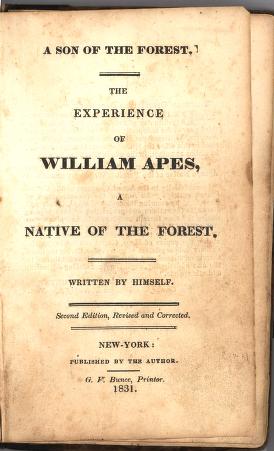|

(c) Pocumtuck Valley Memorial Association, Deerfield MA. All rights reserved.
Two Worlds : Continuity and Persistence
|
|
In the seventeenth and eighteenth centuries, Native Americans and Europeans adapted one another's goods and customs, integrating them into their own belief systems and traditions. One hundred years later, Native people continued to move across their ancient homelands, connected through ties of kinship, culture and tradition. Few in number and often among the economically deprived, they lived what seemed to their white neighbors to be marginal existences. Local histories and newspapers began to write of the deaths of Native individuals as part of a more general death or disappearance of Native Americans as a people.
Even as this myth of disappearance gained strength, other evidence reveals a persistent and continuous Native American presence in southern New England. They lived among their neighbors as well as in small enclaves. They worked as farmers, chair caners, bakers, domestic servants, day laborers, and mill workers, among other occupations.
The life and writings of William Apes (1798-1839) are a window onto this little known and little understood world. Apes was of mixed parentage. He lived with his Pequot grandparents until he became a ward of the town at the age of four. The defining moment of his life was his conversion experience in May of 1813. From that moment, Apes became a committed Christian. He became an itinerant preacher in 1827 and was ordained as a Methodist minister in 1829. No less significant than his conversion experience was Apes' gradual discovery of his ethnicity. At a time when society in general scorned Methodism and Native Americans, Apes proudly embraced the faith and his race. For the remainder of his life, he wrote and spoke out against racism and the ill treatment of Native people. Although he had attended only six winter terms of school, he was a prolific writer. He wrote "A Son of the Forest," the first published autobiography by a Native American, in 1828.
top of page
|
"A Son Of The Forest. The Experience Of William Apes, A Native Of The Forest"
| author William Apes (1798-1839) |
| date 1831 |
| location New York |
| process/materials printed paper, ink |
| item type Books/Book |
| accession # #L01.004.tiex |
|





